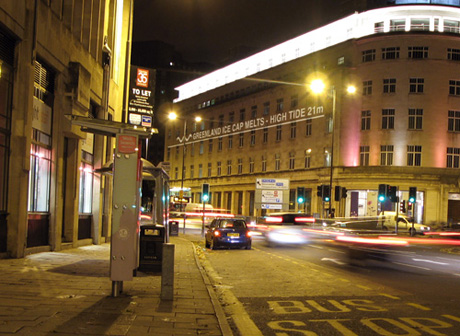Beer enthusiasts, myself among them, were upset to read this week that our pints of pilsner lager might be the latest casualty of climate change. New Scientist reported the depressing news: it seems that the quality of Eastern European Saaz hops is going downhill each year.
According to brewing suppliers Seven Bridges Cooperative, “Saaz hops have long been revered as the very mild, spicy, earthy aroma hop associated with European Lagers. This is the hop you will want for your finest European style Pilsners, and it will shine in wheat beers and Belgian style ales.” The delicate bitterness of Czech pilsners is a result of the alpha acid levels in Saaz hops; the best quality hops contain approximately 5% alpha acids, to produce a pale brew with a soft hop aroma but low bitterness.

IMAGE: A nice cold glass of pilsner lager, or five (via Beersmith).
After examining Czech weather patterns, crop yield, and hop quality records dating back to 1954, climatologist Martin Mozny and his colleagues at the Czech Hydrometeorological Institute found that “the concentration of alpha acids in Saaz hops has fallen by 0.06 per cent a year since 1954.” The study blames increased air temperature caused by climate change, and warms that “models of hop yields and quality under future global warming scenarios predict bigger decreases” in the future.
In short, climate change doesn’t just change the climate; it also changes the taste of Pilsner Urquell.
The collective failure to act decisively to halt climate change has been blamed, at least in part, on a general inability to visualise the disastrous consequences of our carbon emissions. As just one example, take US Representative Michael Burgess, R-TX, who declared, “I don’t really know what a ton of carbon dioxide looks like,” before voting against the American Clean Energy and Security Act of 2009 (as reported by Mother Jones).

IMAGE: From Chris Bodle’s Watermarks Project.
Clearly, then, projects that make the impact of climate change visible (such as Chris Bodle’s awesome Watermarks installation, Angela Palmer’s forthcoming ghost rainforest in Trafalgar Square, or many of the projects featured at the RSA’s fascinating Arts and Ecology program blog) are much needed.
But what if you could make climate change edible, not just visible? Could you create a Climate Change Tasting Menu?
As a sort of amuse-bouche, the Climate Change Tasting Menu could offer local foods and drink that actually taste worse because of climate change – such as traditional Eastern European pilsners. The starter would feature new products that have only recently been cultivated locally, thanks to climate change – Devon olive oil perhaps, accompanied by a nice glass of Kent rosé. The main course might be controversial: test-tube grown imitation meats and vegetables that recreate the flavour and mouthfeel of species that are already lost or threatened with extinction by climate change. Finally, dessert would take the form of a fruit lottery, as harvests become erratic in response to climate change-induced extreme weather events.

IMAGE: The fruit lottery.
After all, our dietary choices have a huge impact on climate change. Perhaps the experience of actually tasting that impact could provide the impetus to change our food culture for the better?

